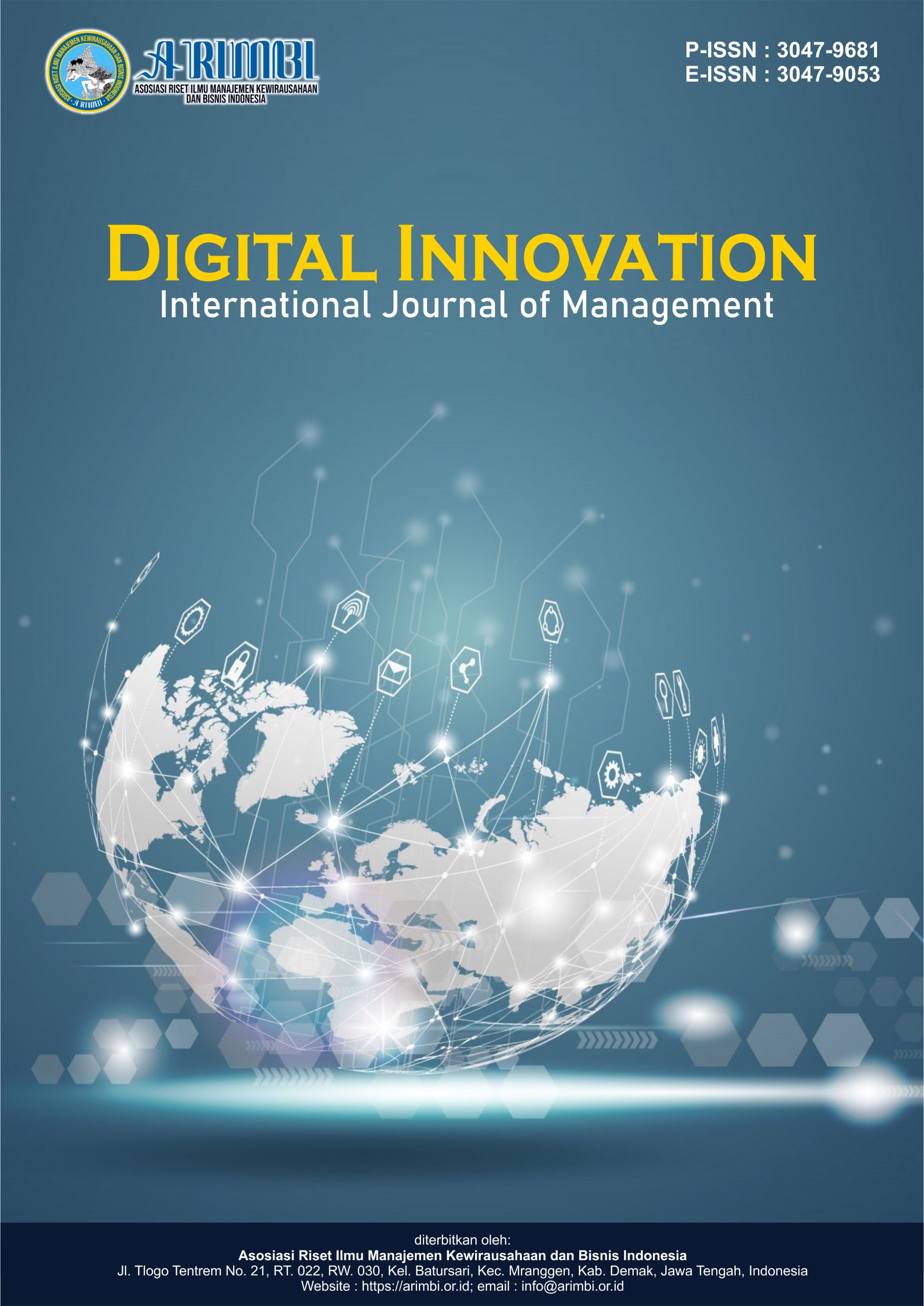Analysis Determinants of Human Development Index in Bali Province
DOI:
https://doi.org/10.61132/digitalinnovation.v2i4.524Keywords:
Bali Province, Economic Growth, Fiscal Decentralization, Gini Ratio, Human DevelopmentAbstract
This research investigates the relationship between fiscal decentralization, economic growth, and income inequality (measured by the Gini ratio) on the Human Development Index (HDI) in regencies and cities within Bali Province during the 2013–2023 period. Human development is a crucial indicator of regional welfare, and understanding the factors that shape HDI is essential for designing effective regional development policies. A quantitative approach was employed through panel data regression, utilizing secondary data sourced from the Central Bureau of Statistics (BPS). The findings indicate that fiscal decentralization has a positive and significant effect on HDI, suggesting that greater regional fiscal authority can improve public service delivery and social welfare. Conversely, economic growth demonstrates a significant negative relationship with HDI, which implies that growth alone does not automatically translate into improved human development, particularly when it is unevenly distributed. In addition, income inequality shows a negative and significant effect on HDI, confirming that disparities in income hinder broader improvements in welfare. Collectively, these variables significantly explain variations in HDI across regencies and cities in Bali. The policy implications emphasize the need to strengthen regional fiscal capacity, reduce income inequality, and encourage inclusive economic growth to ensure that economic progress contributes effectively to enhancing human development.
Downloads
References
Ariza, A. (2016). Pengaruh pertumbuhan ekonomi dan belanja modal terhadap Indeks Pembangunan Manusia (IPM) dalam perspektif Islam. Al Maslahah, 12(1), 1–21. https://doi.org/10.24260/almaslahah.v12i1.348
Arsyad, L. (2015). Ekonomi pembangunan (5th ed.). UPP STIM YKPN.
Badan Pusat Statistik Provinsi Bali. (2024). Indeks Pembangunan Manusia Provinsi Bali menurut Kabupaten/Kota berbagai tahun sebaran. https://bali.bps.go.id/id/
Bengung, A. A., Nurhayati, N., & Syafri, S. (2023). Analisis dampak distribusi pendapatan, tingkat pengangguran, upah minimum dan PDRB terhadap IPM di Daerah Istimewa Yogyakarta tahun 2014–2022. Neraca, 1(5), 39–47. https://doi.org/10.572349/neraca.v1i5.396
Christia, A. M., Ispriyarso, B., & Diponegoro, U. (2019). Desentralisasi fiskal dan otonomi daerah di Indonesia. Law Reform, 15(1), 1–15. https://doi.org/10.14710/lr.v15i1.23360
Dewi, N. (2017). Pengaruh kemiskinan dan pertumbuhan ekonomi terhadap Indeks Pembangunan Manusia di Provinsi Riau. Jurnal Ekonomi, 5(3), 870–882.
Gujarati, D. N., & Porter, D. C. (2013). Basic econometrics (5th ed.). McGraw Hill Inc.
Hayati, J., & Achasa, A. (2014). Dampak desentralisasi fiskal terhadap IPM di Indonesia. Review of Economic Policy, 2(3), 199–214. https://doi.org/10.31002/rep.v2i3.530
Hindun, Soejoto, A., & Hariyati. (2019). Pengaruh pendidikan, pengangguran, dan kemiskinan terhadap ketimpangan pendapatan di Indonesia. Jurnal Ekonomi dan Bisnis, 8(3). http://dx.doi.org/10.26418/jebik.v8i3.34721
Islamiastus, C., & Martha, I. (2021). Analisis pengaruh faktor ekonomi terhadap pembangunan manusia. Oikos: Jurnal Kajian Pendidikan Ekonomi dan Ilmu Ekonomi, 5(2), 99–106.
Jhingan, M. (2016). Ekonomi pembangunan dan perencanaan (1st ed.). Rajawali Pers.
Kuncoro, M. (2004). Otonomi dan pembangunan daerah: Reformasi perencanaan strategi dan peluang. Erlangga.
Machmud, A. (2016). Perekonomian Indonesia: Pasca reformasi (1st ed.). Erlangga.
Mongan, J. J. S. (2019). Desentralisasi fiskal dan pembangunan ekonomi. Indonesian Treasury Review, 4(2), 163–176. https://doi.org/10.33105/itrev.v4i2.122
Nadeak, M. F., Damanik, D., & Tumanggor, B. (2022). Ekonomi di Kabupaten Samosir. Jurnal Ekonomi Daerah, 4(1), 75–88. https://doi.org/10.36985/baqpwv34
Nurhemi, N., & Suryani, G. (2015). Dampak otonomi keuangan daerah terhadap pertumbuhan ekonomi di Indonesia. Bulletin of Monetary Economics and Banking, 18(2), 183–206. http://dx.doi.org/10.21098/bemp.v18i2.522
Pekei, & Beni. (2016). Konsep dan analisis efektivitas pengelolaan keuangan daerah di era otonomi. Taushia.
Rodden, J. A., Eskeland, G. S., & Litvack, J. (2003). Fiscal decentralization and the challenge of hard budget constraints. The MIT Press. https://doi.org/10.7551/mitpress/3021.001.0001
Sinuraya, R. E. M. (2020). Pengaruh desentralisasi fiskal terhadap pertumbuhan ekonomi melalui Indeks Pembangunan Manusia. Jurnal Ekonomi dan Pembangunan, 3(2), 145–156.
Sugiyono. (2018). Metode penelitian kuantitatif. CV Alfabeta.
Syofya, H. (2018). Pengaruh tingkat kemiskinan dan pertumbuhan ekonomi terhadap IPM. Jurnal Ilmu Ekonomi dan Bisnis, 15(2), 177–185. https://doi.org/10.31849/jieb.v15i2.1153
Tirtosuharto, D., & Darius. (2017). Does fiscal decentralization help Indonesia avoid the resource curse? Asian Development Bank Institute Working Paper (No. 729). https://hdl.handle.net/10419/163225
Todaro, M. P., & Smith, S. C. (2006). Pembangunan ekonomi jilid 1 (9th ed.). Erlangga.
Umamah, R., & Syafitri, F. (2025). Analisis pengaruh pengangguran, gini rasio, dan jumlah penduduk terhadap Indeks Pembangunan Manusia di Provinsi Lampung. Jurnal Dinamika Ekonomi Daerah, 4(5), 122–134. https://doi.org/10.59664/jded.v4i1.10560
Widarjono, A. (2013). Ekonometrika: Pengantar dan aplikasinya. Ekonosia.
Downloads
Published
How to Cite
Issue
Section
License
Copyright (c) 2025 Digital Innovation : International Journal of Management

This work is licensed under a Creative Commons Attribution-ShareAlike 4.0 International License.




